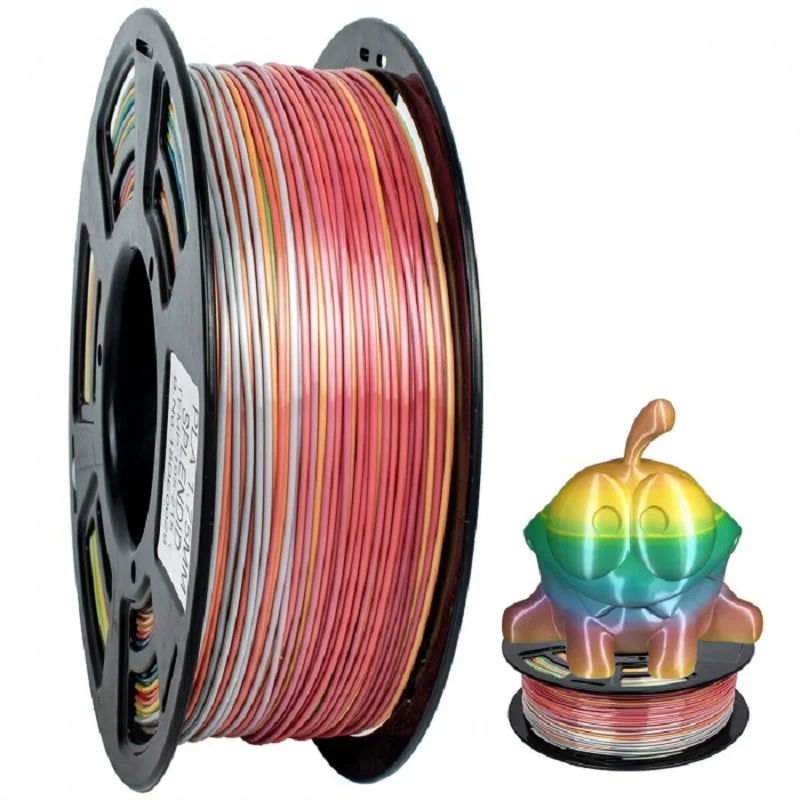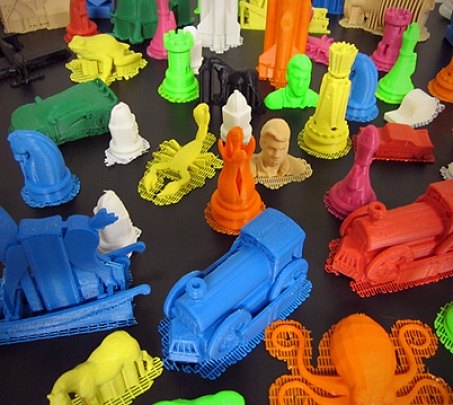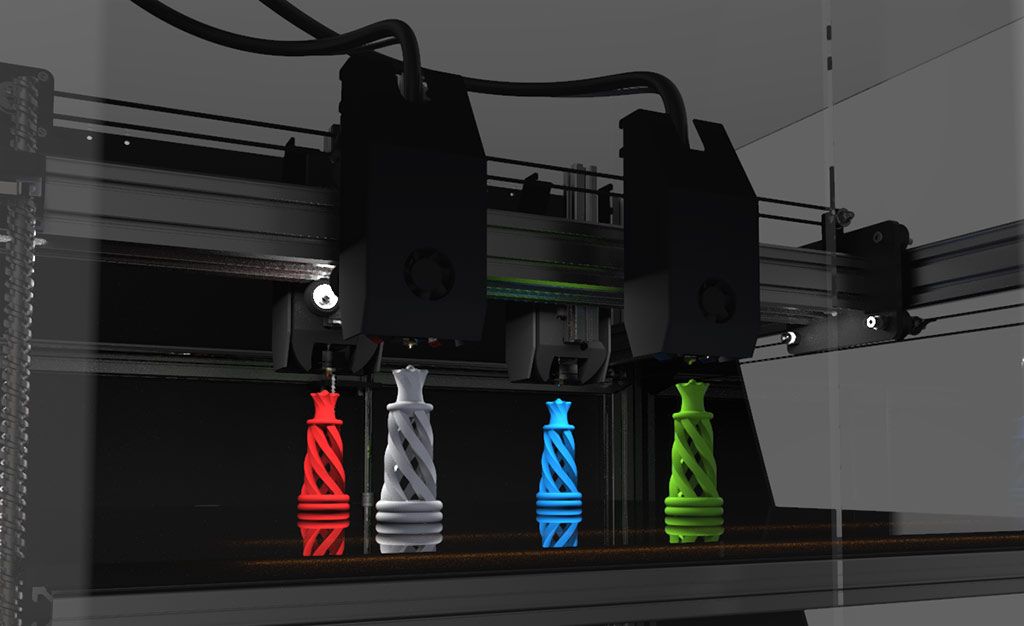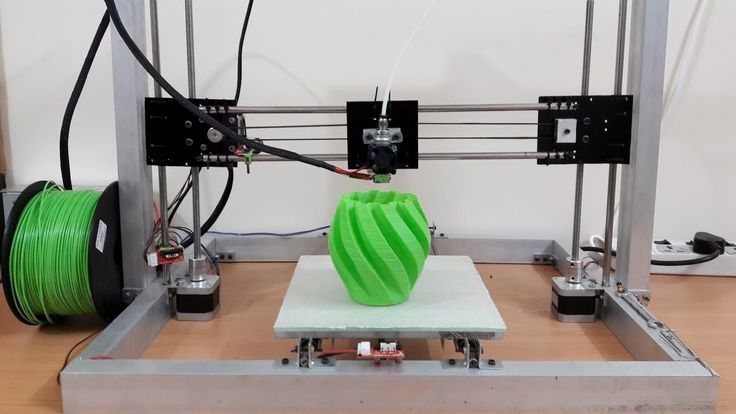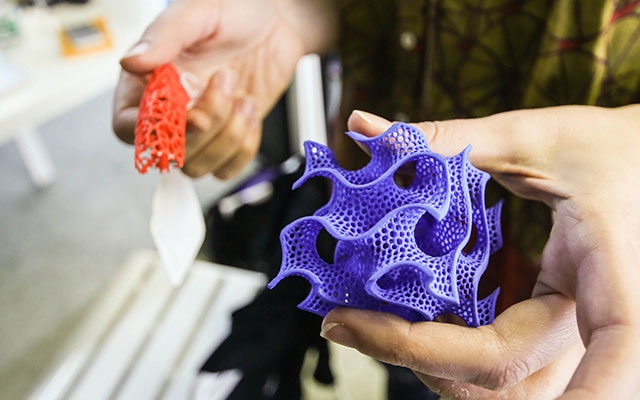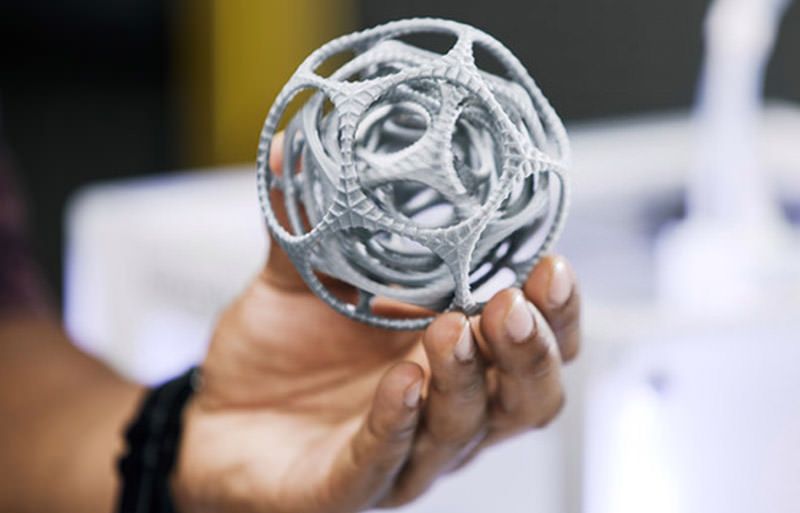Best place to buy 3d printer filament
Where to buy filament for your 3D printer online
Filament and printer (Image credit: Windows Central)Where to buy filament for your 3D printer online
Best answer: The best place to pick up some filament worldwide is Amazon. The worldwide market has access to many brands and types of filament with great prices, a logistics network for economical shipping, and an unmatched return policy.Some different filaments
There are multiple types of filaments we use with 3D printing, and most of them can be found almost anywhere. Each of the best filaments is good for different tasks, but in this piece, we'll be looking at the four most common filaments you're likely to buy:
- PLA — Starter material king
- PETG — Optically beautiful
- ABS — Hardcore but harder to print
- TPU / Flex — Bendable and stretchable
PLA is the most used 3D printing filament for a reason; it's easy to print with low temperatures of around 200 degrees Celsius on the hotend, and either does not need a heated bed at all or can print at around 60 degrees Celsius on the cold end. PLA has many modified counterparts. Some making your prints silky in appearance while others make it more impact-resistant.
Next up is PETG, which is a slightly harder material to print but has much stronger interlayer adhesion properties (it sticks to itself better). It can also be almost perfectly transparent, making lovely glass-like objects or vases.
ABS and TPU / Flex are outliers here. ABS is a less popular filament than it once was, but it has high-temperature resistance of around 100 degrees Celsius, can be carved with a knife easily, and can even be smoothed using acetone vapors, but it needs hotter temperatures, a much hotter bed, and even a breeze in your room can ruin a print. TPU or Flex are hard to print because they're, you know, flexible. Have you ever tried to push wet spaghetti through a straw? It bunches up and sticks. However, once you figure it out, you can create awesome things like tires, gaskets for home use, or, in my case, custom watch straps!
Where to buy worldwide: Amazon
Source: Windows Central (Image credit: Source: Windows Central)Amazon is, of course, one of the best places to start looking for filament, with a wide range of companies to choose from, including its own Amazon Basics brand of filament.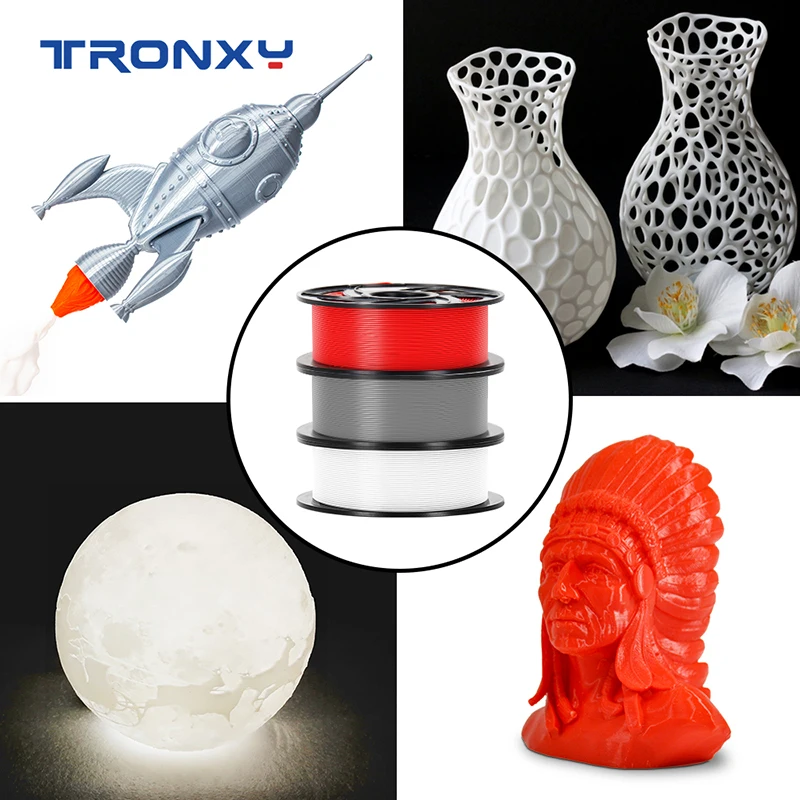 You can even snag some with Prime shipping, which is great if you want next-day shipping for those time-sensitive prints.
You can even snag some with Prime shipping, which is great if you want next-day shipping for those time-sensitive prints.
As mentioned before, Amazon Basics is a good place to start for inexpensive filament, but Amazon also has a slightly more upmarket brand called Eono. I've tried its PETG and Silk PLA, and I have been happier with the quality than expected, given the price.
The only problem with looking for filament on Amazon is just the sheer breadth of suppliers, many of which look similar or have very few items in the shops. As with most things on Amazon, check the reviews before you purchase anything.
Affordable Luxury
Amazon Basics Silk PLA
We all like pretty things, and silk PLA are the epitome of shiny, high-gloss filaments that take a standard 3D printed bust of Michelangelo's David to a high-end art piece for your desk.
Where to buy in the U.S.: Matterhackers
Source: Windows Central (Image credit: Source: Windows Central)MatterHackers is a website that many 3D printing enthusiasts should know. It's like a maker version of Willy Wonka's chocolate factory, with printers like the Peopoly Phenom, filaments, accessories, and much more. It even has laser cutters, CNC machines, and other products not for 3D printing. Much Like Amazon, MatterHackers has its own filament brands. The BUILD series is its everyday inexpensive brand, whereas the Pro series is more rigorously tested and has more exotic features.
It's like a maker version of Willy Wonka's chocolate factory, with printers like the Peopoly Phenom, filaments, accessories, and much more. It even has laser cutters, CNC machines, and other products not for 3D printing. Much Like Amazon, MatterHackers has its own filament brands. The BUILD series is its everyday inexpensive brand, whereas the Pro series is more rigorously tested and has more exotic features.
MatterHackers lets you drill down to what types of filament (PLA, PETG, ABS) as well as the diameter (1.75/2.85/3.00mm) and by brand, so if you had a great experience with eSun, you could look specifically at 1.75mm eSUN Silk PLA if you really wanted to.
workhorse filament
Matterhackers Build PLA
A cheap, good-quality filament with a plethora of colors, what's not to like? It's particularly good for building props and models, so an excellent choice for cosplayers.
Where to buy in the U.
 K.: 3DFilaprintSource: Windows Central (Image credit: Source: Windows Central)
K.: 3DFilaprintSource: Windows Central (Image credit: Source: Windows Central)Not everyone is in the U.S. I'm in the U.K and 3DFilaprint is where I buy most of my filament. With lots of brands — and even multiple types of its own — it's a great local way to buy filaments in the UK. with free next-day shipping if you buy two or more spools. This is a great way to "accidentally" spend more money on filament than you expected this month.
One of the great things about 3DFilaprint is that it also sells filament samples. If you aren't sure if you'll like the color or if you only need a small amount, buying these inexpensive or novel filament samples can be a great way to broaden your brand or material selection, and at just a few quid, why not buy a few?
Recycled goodness
3DFilaprint PIPG Silver
Utilizing waste plastics, 3DFilaprint's PIPG (Post-Industrial PET-G) is another way to make treasure out of what would be trash. With the benefits PETG gives, the twinkling silver of this PIPG is one of my favorites.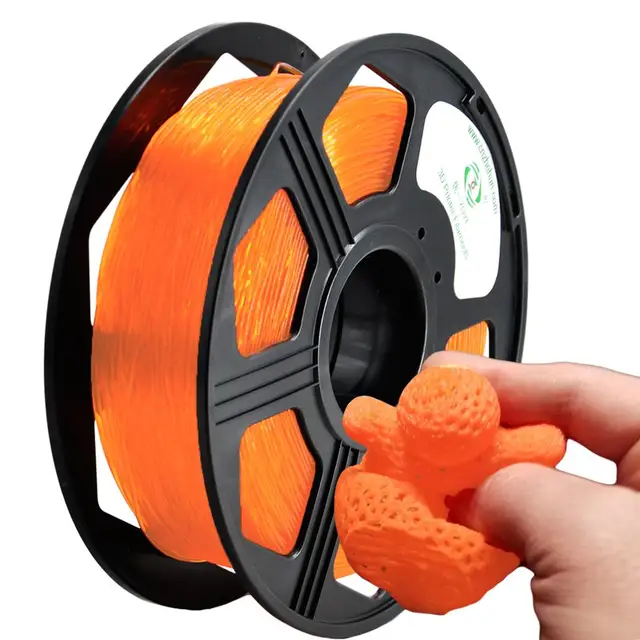
Where to buy in Canada: Filaments.ca
Source: Windows Central (Image credit: Source: Windows Central)Lastly, our friends in the great white north of Canada will like Filaments.ca, which is a one-stop shop similar to 3DFilaprint with multiple filters for brands, material type, material properties (i.e., ESD Safe or Antimicrobial), color, and diameter. Filaments.ca has an amazing stock of filaments that I'd never heard of before and now will buy again. It also stocks filament coils for people into the masterspool — or other OEM specific — ecosystem, which is very cool and reduces the number of empty single-use spools that end up in a landfill.
Like every other website listed, you can also buy 3D printers from Filaments.ca and photopolymer resin for resin printers, but as you can tell by the site name, its bread and butter product is filaments, and boy does it deliver.
Insanely cheap
Econofil standard PLA Gold
Despite being so close to the U. S., Canada doesn't get most of the absolutely awesome deals they get, so Filaments.ca has its own range of great low-cost filaments.
S., Canada doesn't get most of the absolutely awesome deals they get, so Filaments.ca has its own range of great low-cost filaments.
There are multiple places to buy filaments. Amazon is a great worldwide resource, but the smaller localized ones mentioned here are also incredibly useful, and are often better staffed with customer support clerks that know what they're talking about, which can be very important for people just getting into the hobby or trying out a new filament. Buying local also has benefits of lower shipping costs and more stable supplies, but Amazon has an amazing return policy, so keep that in mind when deciding.
You can use any of the marketplaces no matter where you are, but I feel that the shipping charges from Canada to the U.K. might be a bit much for a roll of Filament that I can get from a U.K. distributor or Amazon.
Get the best of Windows Central in in your inbox, every day!
Contact me with news and offers from other Future brandsReceive email from us on behalf of our trusted partners or sponsorsThe Best Places to Buy Your 3D Printing Filament
3D Insider is ad supported and earns money from clicks, commissions from sales, and other ways.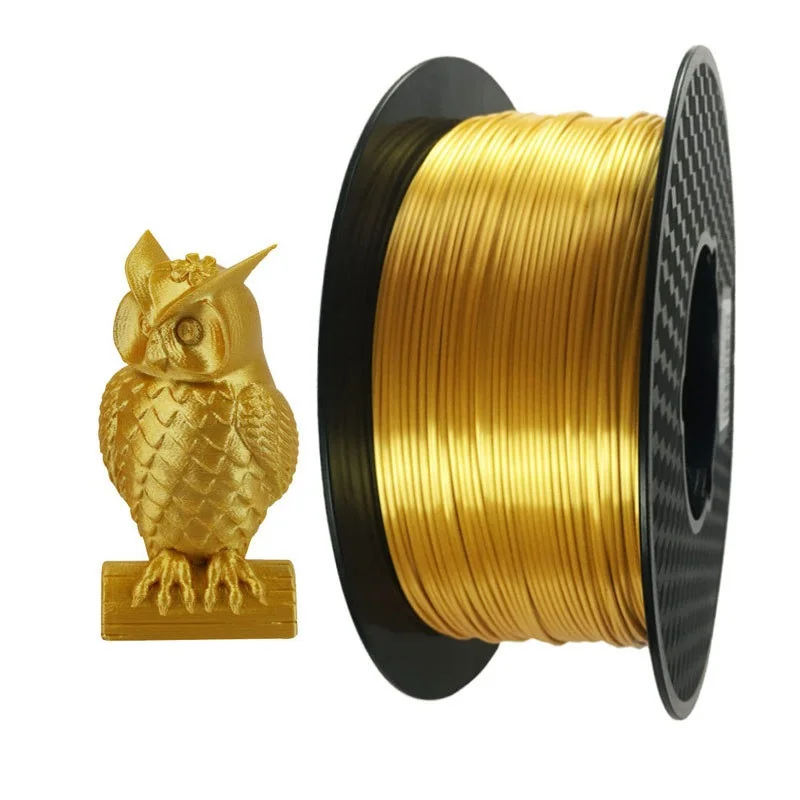
Amazon remains a good option for filaments, as they can fulfill orders for a wide range of popular 3D printing filament brands. However, there are also some top brands that run their own online stores like MatterHackers, ProtoPasta, and Makerbot.
Hoarding dozens of filament spools is part of the territory when you go into 3D printing. The fact that these filaments are so inexpensive and that there are so many different types is one of the most appealing things about this craft. However, you should still be careful about where you buy your filaments – here are our favorite stores:
Amazon
It’s no surprise that Amazon is still one of our go-to choices for buying 3D printing filaments. It’s just a convenient option if you tend to shop online on Amazon regularly. If you want your filament to be delivered as quickly as possible, then Amazon is a perfect choice if you have Prime subscription.
Amazon is a great store if you’re looking for fairly inexpensive filaments.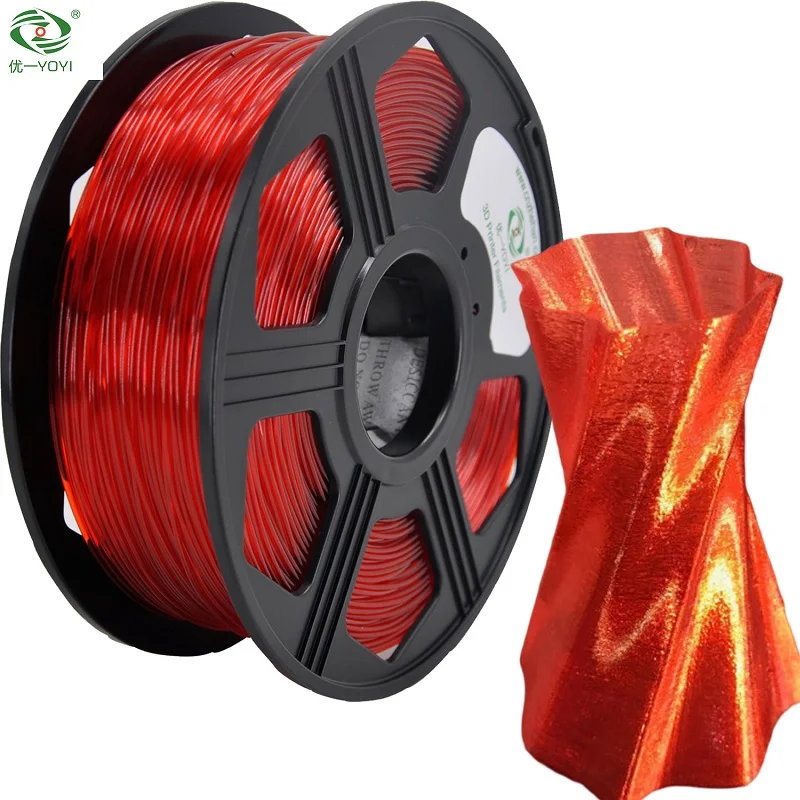 Brands like eSun, Sunlu, and Overture are mainstays in Amazon. There is also an Amazon Basics brand for 3D printing filament, although the selection is not very extensive.
Brands like eSun, Sunlu, and Overture are mainstays in Amazon. There is also an Amazon Basics brand for 3D printing filament, although the selection is not very extensive.
Hatchbox is one of the more popular and reputable filament brands that are available on Amazon. Hatchbox has a huge selection of different colors of PLA, ABS, PETG, and TPU filaments. They also have good composite filaments such as Wood, Silk, and Glow-in-the-Dark. If you’re into resin printing, then you can also buy photopolymer resins in the Hatchbox store on Amazon.
Another reputable filament brand that has an official store on Amazon is Creality. Creality is more well-known for their 3D printers so their filament selection is surprisingly small. Right now, they offer only filaments in PLA and PLA variations. If you own a Creality 3D printer, then it makes sense to give Creality filaments a try. They are not expensive, although feedback on quality seems inconsistent.
If there’s a downside to shopping in Amazon, it’s the fact that it also has lots of less reputable filament brands. The products from these suppliers also look very similar, so making the distinction can be quite hard. Make sure to check for good and genuine reviews before you buy filament from a brand that you are not familiar with.
The products from these suppliers also look very similar, so making the distinction can be quite hard. Make sure to check for good and genuine reviews before you buy filament from a brand that you are not familiar with.
MatterHackers
Southern California-based MatterHackers runs their own online store for 3D printing filaments as well as 3D printers, resins, adhesives, 3D printer components, and laser cutters.
MatterHackers has a huge selection of MH brand filaments. All the basic filament types such as PLA, ABS, PETG, and Nylon are well-represented. These filaments also have “PRO” versions which have better overall mechanical properties, albeit they are significantly more expensive. If you’re just getting started in 3D printing, the multi-spool bundles sold by MatterHackers are a great way to start experimenting with the capabilities of your 3D printer.
The MatterHacker online store also carries filament from other popular brands including Ultimaker, Fillamentum, Proto-Pasta, eSun, and Kodak. The selection from these brands isn’t quite as extensive, but it’s always good to have more options.
The selection from these brands isn’t quite as extensive, but it’s always good to have more options.
MatterHackers offers free shipping for orders that cost at least $35. Delivery time is typically within 2 to 3 days, provided that the items ordered are in stock. Expedited shipping is available upon request but will also require an added fee. They also have a showroom in Orange County, CA where you can pick up your orders.
MakerBot
MakerBot is a brand of 3D printers and filaments that are more well-known for quality rather than low prices. This means that MakerBot filaments may not be cheap but they will probably be some of the best filaments that you have worked with.
The MakerBot online store offers a wide range of high-performance 3D printing filaments that are designed for prototyping and other professional applications. Most of the filaments are made specifically for MakerBot 3D printers. Considering the prices of both the MakerBot 3D printers and their filaments, this store pretty much caters to the high-end market.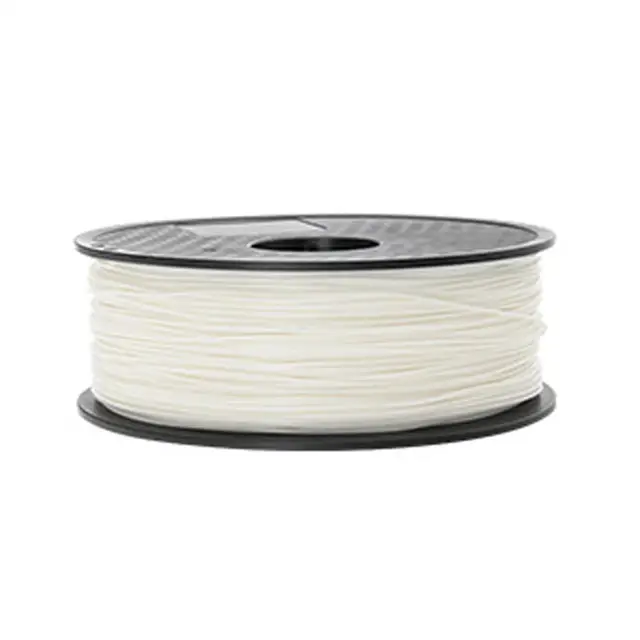
If you work with the MakerBot ecosystem, then buying MakerBot filaments is a no-brainer. Their filaments are on a different level in terms of quality and performance. Despite the high prices, these filaments are well worth the investment.
Proto-Pasta
The Proto-Pasta brand is known for two things – their signature cardboard spool and their huge collection of fancy and whimsical 3D printing filaments. There are other online stores that carry the Proto-Pasta brand but their official store has the widest range of filaments.
If there’s a specific filament you’re looking for, there’s a good chance that Proto-Pasta has it. They have filaments that are conductive, metal-filled, ultra-rigid, abrasive, heat-treatable, magnetic, high-density, matte, glossy, and translucent among a dozen other options. Proto-Pasta has earned a good reputation for offering filaments that are not available from any other brand.
The cardboard spool has become the signature of Proto-Pasta filaments. Proto-Pasta is worth considering for your filament supply just for this fact alone. Anyone who has been into 3D printing for a good while has probably amassed a pile of empty filament spools that are very difficult to recycle. Cardboard spools are not a perfect solution, but they eliminate the very serious problem of waste accumulation.
Proto-Pasta is worth considering for your filament supply just for this fact alone. Anyone who has been into 3D printing for a good while has probably amassed a pile of empty filament spools that are very difficult to recycle. Cardboard spools are not a perfect solution, but they eliminate the very serious problem of waste accumulation.
Filaments.ca
For those based in Canada, we highly recommend the online store of Filaments.ca. This is probably the best Canada-based online store for 3D printing filaments. They carry a huge number of brands including popular names such as 3DFuel, COlorFabb, NinjaTek, Proto-pasta, Taulman3D, and about a dozen others. Next to Amazon, this site probably has the widest range of 3D printing filaments.
Filaments.ca is a great option if you want to easily compare prices across different filament brands. You might even catch discounts on specific filament spools. The store also offers 3D printers and 3D printing resins, although the selections for these products are not as comprehensive.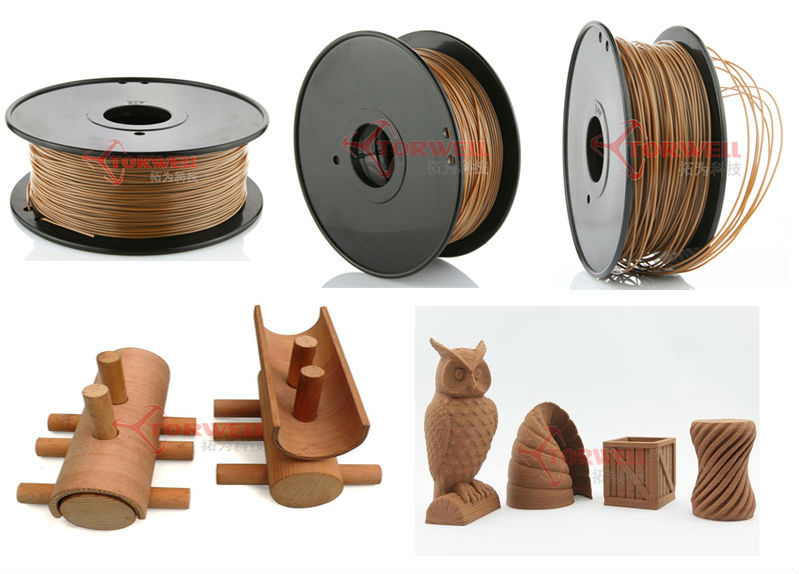
Buyers from the US can also shop in Filaments.ca and get free shipping if they can order more than $200 CAD worth of products. That’s honestly a lot of filament, so the option might not be for everyone. For hobbyists based in Canada, this is probably the best online store that ships locally.
Final thoughts
The great thing about modern 3D printing nowadays is that we have been absolutely spoiled by the variety and availability of filaments of different colors and materials. It’s also very easy to buy these filaments online, which makes it equally easy to buy filaments of poor quality. Whenever buying them online, it is always worth the time to check for reviews and feedback, whether on the online storefront or in online 3D printing communities.
Warning; 3D printers should never be left unattended. They can pose a firesafety hazard.
Best 3D Printer Filaments (Review 2021)
Once you've chosen your 3D printer, you need to choose the type of filament intended for your project.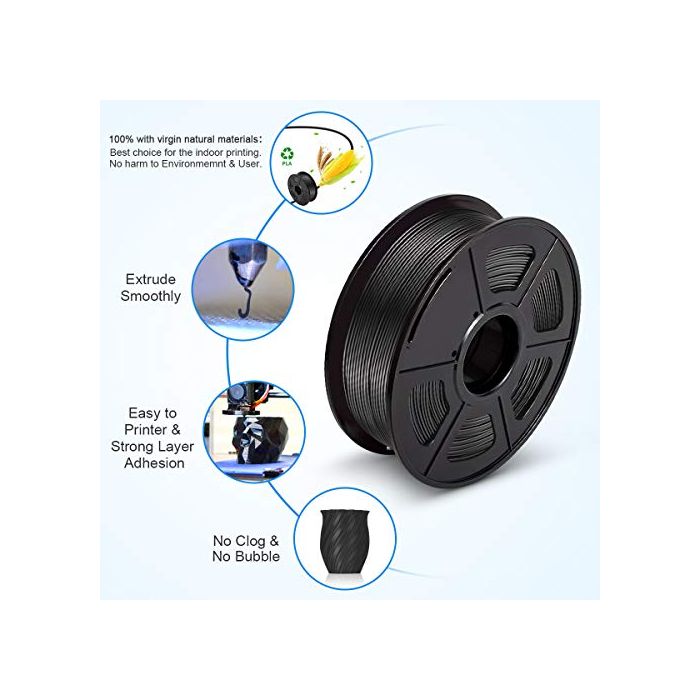 Filament is a raw material used in 3D printers that will be heated to a high temperature to turn it into a semi-solid state. At this point, the printer can easily create the appropriate design layers and print the entire 3D CAD model onto a plate.
Filament is a raw material used in 3D printers that will be heated to a high temperature to turn it into a semi-solid state. At this point, the printer can easily create the appropriate design layers and print the entire 3D CAD model onto a plate.
However, as you research the various 3D printer filaments, you will hear of numerous materials that can only make it harder to choose the right one for you. This is especially true for people who are just starting to explore the world of the 3D printing process. nine0003
While most of us are not new to PLA and ABS, there are other fiber materials you should be aware of such as HIPS, PET, PETG, TPE, TPU, TPC and a few others. And to get a better idea of them, here are some of the more typical types of 3D printer filaments available on the market.
3D Printer Filament Types
PLA Filament
Polylactic acid (PLA) reigns supreme in the industrial 3D printing world. 3D printing with PLA is so easy. It has a lower plate temperature, so it doesn't need a heating bed and therefore has fewer warping issues. nine0003
It has a lower plate temperature, so it doesn't need a heating bed and therefore has fewer warping issues. nine0003
It is widely used in prototyping, such as printing low-wear toys, prototype parts and containers. Please note that it cannot be used for anything that has a temperature rating of 60°C or higher as it warps at 60°C. For all other purposes, PLA is suitable for a general 3D printer.
ABS Filament
ABS (also known as Acrylonitrile Butadiene Styrene) is the second most popular 3D printing filament. In general, ABS withstands high loads and high temperatures. Thus, it is suitable for most applications. It is great for items that are frequently handled, dropped or heated. For example, mobile phone cases, high-wear items, automotive trim parts, and electronic houses. nine0003
Nylon filament
Nylon is the preferred family of synthetic polymers for many industries, professional 3D printing being one of them.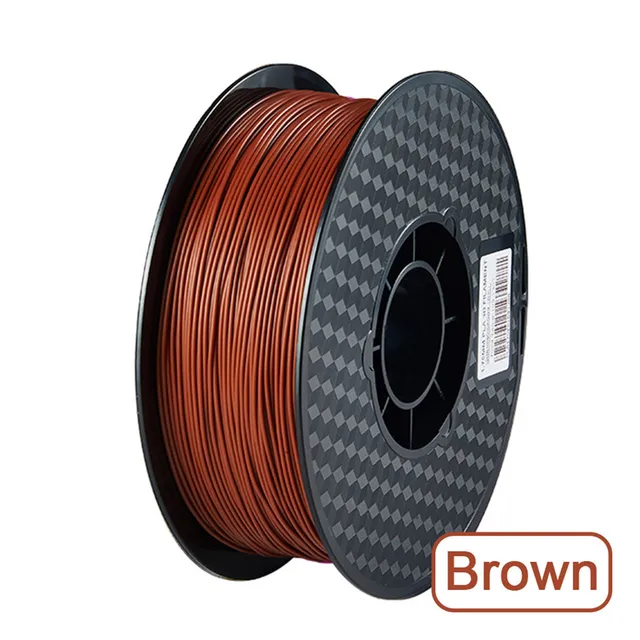 As for other forms of filament, they have better performance, efficiency, versatility and durability. Given the strength and versatility of nylon, this type of 3D printer filament can be used to make loops, buckles or gears, as well as working prototypes.
As for other forms of filament, they have better performance, efficiency, versatility and durability. Given the strength and versatility of nylon, this type of 3D printer filament can be used to make loops, buckles or gears, as well as working prototypes.
PET (G) thread
The most widely used plastic in the world is polyethylene terephthalate (PET). It is best known as water bottle thread, but it is also used in clothing fibers as well as food containers. Although PET is commonly used in 3D printing, its modified version PETG is becoming more common.
The G in PET stands for glycol, resulting in a more transparent filament that is less prone to cracking and easier to use. PETG is versatile but surpasses many forms of 3D printer filament in its strength and inability to reach high temperatures or withstand strong impacts. The fulfillment of the following conditions makes it an excellent choice for 3D printing filament for practical parts such as mechanical parts, printer parts, and protective materials. nine0003
nine0003
TPE, TPU, TPC filament
Thermoplastic polyurethane (TPE) is a flexible and durable plastic similar to rubber. In addition, TPE is mainly used for the production of auto parts and household appliances.
TPU (Thermoplastic Polyester E) is a special form of TPE that is very common among high end 3D printers. Compared to conventional TPE, TPU is significantly more flexible, hence allowing more control during printing.
What's more, TPC (Thermoplastic Copolyester) is also another form of TPE that is not as widely used as TPU. The key advantage of TPC over TPE is its greater resistance to chemical and UV attack, as well as heat (up to 150°C). nine0003
If you need to create items that require a lot of wear, use TPE or TPU because these filaments use 3D printed filaments that are vulnerable to deformation. Products such as toys, mobile phone cases, or wearable items such as wristbands can be some examples of its application. On the other hand, TPC performs well for comparable applications, but outperforms it in harsher environments, including outdoors. nine0003
On the other hand, TPC performs well for comparable applications, but outperforms it in harsher environments, including outdoors. nine0003
Wood filament
Technically not wood because it contains wood fiber in enhanced PLA. Generally speaking, wood products are valued for their natural beauty rather than their practical utility. When printing items for tables, tables or shelves, it is recommended to use wood 3D printing media. Any of the application examples include chalices, figurines, and trophies. What's more, it's a truly innovative application for 3D printers, which are often used to model real buildings, structures, or trees. nine0003
Metal thread
Like wood thread, it is not 100% metal. Specifically, it is composed of metal powder, and one of the following materials is PLA or ABS. However, the effects also have a metal-like aesthetic appeal. Metal Infused can be printed for both decorative and practical purposes. Figures, prototypes, toys, including tokens, can be 3D printed from metal and give them a great look. You can also use metallic 3D printer filament to make parts such as tools or finishing components in light applications. nine0003
Figures, prototypes, toys, including tokens, can be 3D printed from metal and give them a great look. You can also use metallic 3D printer filament to make parts such as tools or finishing components in light applications. nine0003
Biodegradable (biophila) filament
This biodegradable 3D printer filament aims to reduce the impact of all plastic waste into the atmosphere. Although biodegradable 3D filament was originally environmentally friendly, it can still produce quality printed products. Choose this biophile if you don't have special requirements for strength, versatility or endurance. For projects that require prototyping, you can also benefit from these flawless fiber prints that can be biodegraded responsibly. nine0003
Conductive thread
This is a kind of three-dimensional material with conductive carbon particles in it. It is ideal for Arduino-based open source businesses. You'll want to look into this filament if you want to make circuits, LEDs, sensors, and other low voltage projects.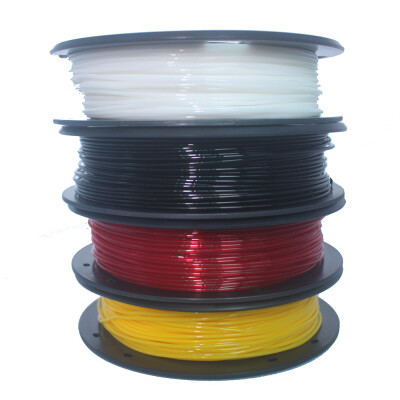
Magnetic filament
PLA magnetic iron filament is as magnetic as the name suggests. This one-of-a-kind filament is made from PLA material impregnated with powdered iron. It is ideal for making fridge magnets and other custom-made decorative items. Also, it can be used to create multiple DIY structures, sensors, educational resources, etc.0003
Top Five 3D Printer Filaments
Access to a 3D printer creates a whole new world of creative printing. There are several purposes and hobbies that 3D printing serves, but they all rely on the same raw material - 3D printer filament.
While unique materials are recommended for durable and impressive models, you need to select the right material for your 3D image. need printer. You also need to consider the quality and attributes of the thread. That being said, finding the right 3D filament is no picnic. nine0003
As such, we sought the advice of tech experts and 3D printer enthusiasts to find the most popular 3D printing filaments on the market.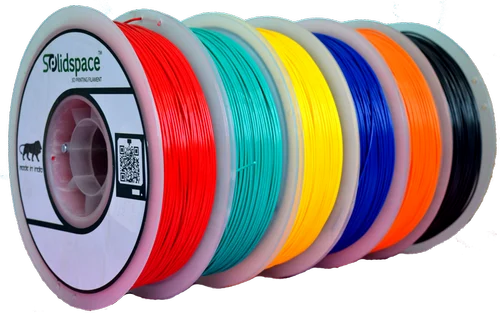 And to give you a clearer idea of their main features and specifications, we have done a detailed analysis to better understand which filament you should pair with your 3D printer. Also, don't forget to click on the buttons below to get the best deals on Amazon!
And to give you a clearer idea of their main features and specifications, we have done a detailed analysis to better understand which filament you should pair with your 3D printer. Also, don't forget to click on the buttons below to get the best deals on Amazon!
Best 3D printers for home, office or studio
How often have you thought about buying a 3D printer? There is nothing surprising if such a thought periodically visited you. Today, 3D printing has gone beyond the geek toy it once was, and the 3D printer has become a truly useful device for many creative people. Such printers can be used not only to produce parts for all kinds of design projects, but also to print useful home appliances. In addition, the ability to print with consumables such as metal, rubber, or even biodegradable filaments means that finished products will be strong and durable. And if you are an experienced 3D artist or designer, you can combine your skills and the capabilities of a 3D printer to the maximum.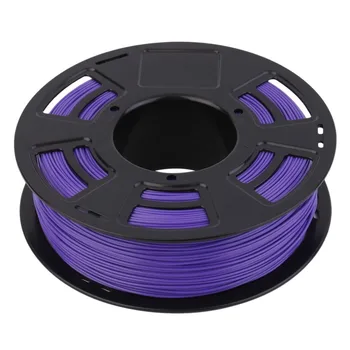 nine0003
nine0003
Be aware that not all 3D printers work the same way. Some use spools of plastic filament that is heated like a hot glue gun and then laid out in layers on the print bed. The print quality of such devices can be good, but some manual processing is often required to smooth out the layer lines. Some models use an LCD screen to shine light onto the resin, while other printers use a laser to solidify the melted resin. nine0003
If you do not want to do modeling, then the abundance of marketplaces with ready-made 3D models will allow you to get good results. Thingiverse, CG Trader and many other sites offer all sorts of models in .stl format that you can print with just a few clicks. Very often you can find free models.
Anycubic Vyper
Budget printer with good features
Price: $399.
Print volume: 245x245x260 mm. nine0089 Layer thickness: 100 µm.
Pluses:
- Self-levelling bed included,
- excellent level of detail,
- good print speed.
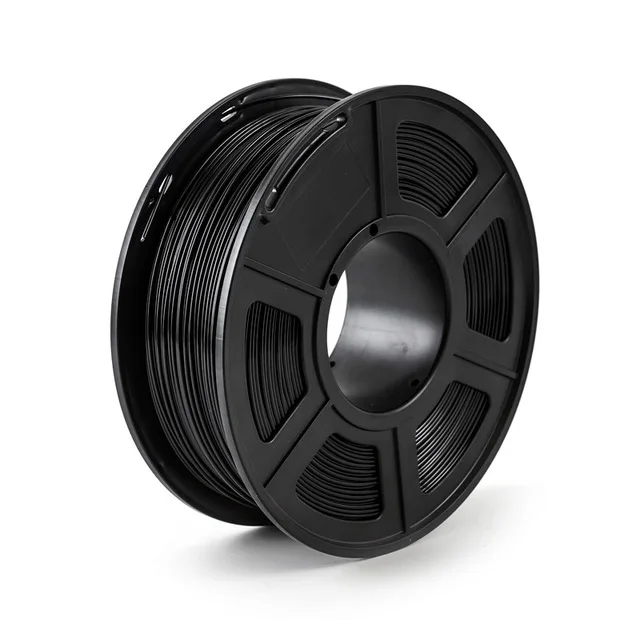
Cons:
- the need for self-assembly.
All Anycubic 3D printers are good options, but as the most affordable FDM printer, the Vyper is the best deal. It has features not found in more expensive options, and produces prints with great detail and clarity, while doing so with minimal noise. The heated self-levelling print bed is a great feature, but adding a magnetic spring steel sheet to make it easier to remove prints is a win-win. nine0003
Ultimaker S3
Best solution for general 3D printing tasks
Price: $4,080.
Print volume: 230x190x200 mm.
Layer thickness: 20 µm.
Pros:
- double extruders make life easier,
- is an excellent self-leveling heated build platform.
Cons:
- not the cheapest option,
- noise level is higher than some other printers. nine0096
Ultimaker printers come in a variety of sizes and capabilities, but the Ultimaker 3 is the model we deliberately included in our list of the best 3D printers.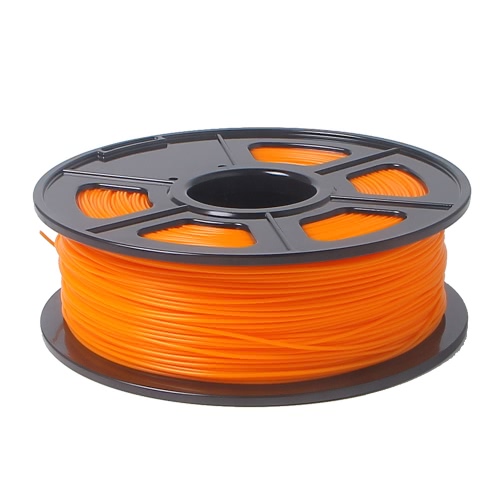 A 3D printer has most of the features you want from larger brethren, including dual extruders and nozzles of various sizes. This means that you can print models that would be difficult to print using PVA plastic, which dissolves in water. The Ultimaker 3 also has a print progress camera, a great touch screen interface and a solid build. If you need to master large volumes of printing, then choose the advanced version, which is a little more expensive. nine0003
A 3D printer has most of the features you want from larger brethren, including dual extruders and nozzles of various sizes. This means that you can print models that would be difficult to print using PVA plastic, which dissolves in water. The Ultimaker 3 also has a print progress camera, a great touch screen interface and a solid build. If you need to master large volumes of printing, then choose the advanced version, which is a little more expensive. nine0003
Elegoo Mars 2 Pro
Best Resin Printing Solution
Price: $329.99.
Print volume: 129x80x160 mm.
Layer thickness: 50 µm
Pros:
- excellent print quality at a reasonable price,
- fast printing at 1-2 seconds per layer.
Cons:
- self assembly required,
- Printing smoke can be annoying. nine0096
Elegoo is relatively new to the 3D printing market, but the original Mars printer made a good impression on the community.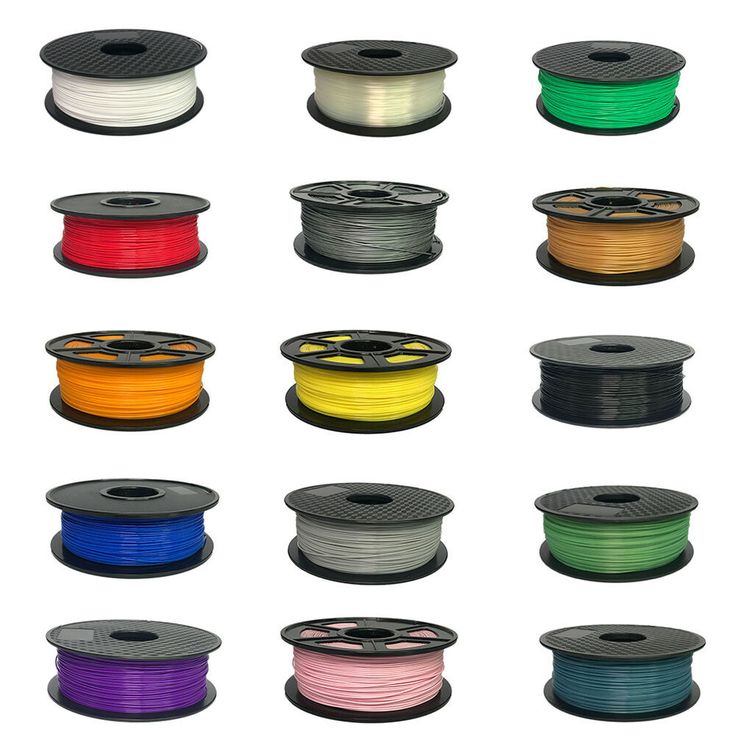 Mars 2 Pro only confirms the serious intentions of the manufacturer. The new 6” screen prints a layer in less than 2 seconds with no loss of clarity or blur, making this 3D printer one of the fastest resin printers around. In terms of prototyping speed, it's hard to beat unless you need larger objects, as the only real downside to the Mars 2 Pro is the small amount of printed assembly. Smoke when printing is typical for this type of printer. nine0003
Mars 2 Pro only confirms the serious intentions of the manufacturer. The new 6” screen prints a layer in less than 2 seconds with no loss of clarity or blur, making this 3D printer one of the fastest resin printers around. In terms of prototyping speed, it's hard to beat unless you need larger objects, as the only real downside to the Mars 2 Pro is the small amount of printed assembly. Smoke when printing is typical for this type of printer. nine0003
Makerbot Replicator+
Universal 3D printer with FDM
Technology: 4500 dollars
Press volume: 295x195x165 mm
layer thickness: 100 μm
Plus:
Cons:
- takes up more space than most competitors,
- is not the cheapest option.
Makerbot has been around for a long time and is probably the best-known manufacturer of consumer 3D printers. Even Anna Kendrick used it in space in the movie Stowaway.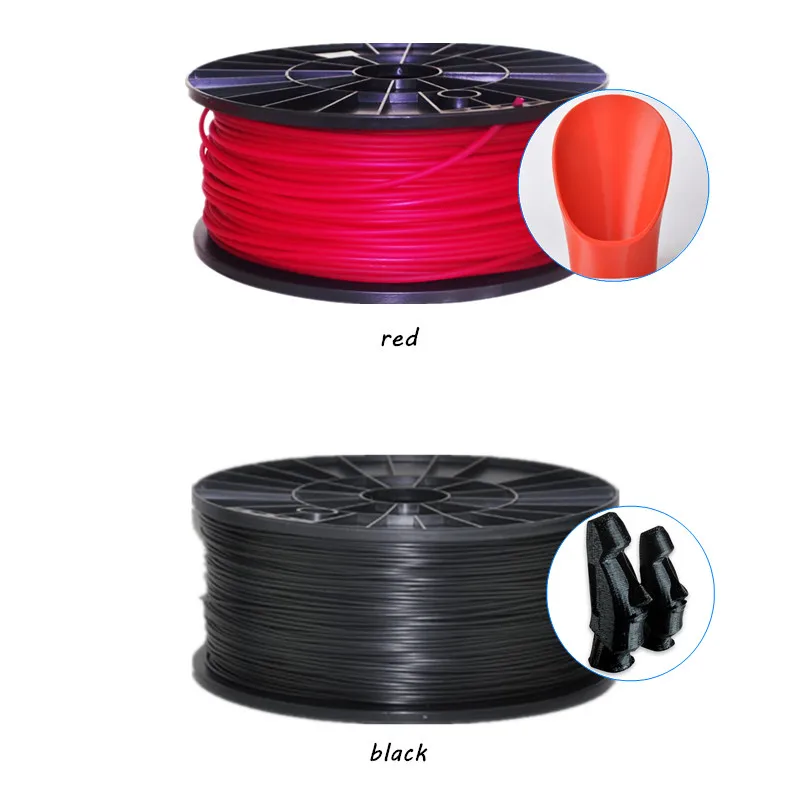 Experience in this area has allowed Makerbot to maintain a similar area to previous models, but increase the volume of printing and reduce the noise level. This model provides a large number of connectivity options, including Wi-Fi. The Makerbot Replicator+ even has a camera so you can watch what's going on remotely. Printing results are good and need only a little manual refinement, because this is an FDM printer. The Replicator+ is a great and reliable option if you are looking to purchase a 3D printer for your home office, school or workshop. nine0003
Experience in this area has allowed Makerbot to maintain a similar area to previous models, but increase the volume of printing and reduce the noise level. This model provides a large number of connectivity options, including Wi-Fi. The Makerbot Replicator+ even has a camera so you can watch what's going on remotely. Printing results are good and need only a little manual refinement, because this is an FDM printer. The Replicator+ is a great and reliable option if you are looking to purchase a 3D printer for your home office, school or workshop. nine0003
Anycubic Photon mono SE
Best choice for printing 3D miniatures
Price: $449.89
Print volume: 130x78x160 mm.
Layer thickness: 100 µm.
Pros:
- excellent level of detail,
- smooth surface.
Cons:
- pairs of highlights during printing can be unbearable,
- resin is expensive. Anycubic's
Photo Mono SE is a great choice if you like custom toys, collectibles or action figures from PC games as the detail on this printer is fantastic. Like other monochrome printers, it is fast enough. It only takes about a second to print one layer. The resin may have an unpleasant odor, but you can place the printer under an air exhaust cabinet. This is a small sacrifice for such a productive machine, which is really worth the money spent. nine0003
Like other monochrome printers, it is fast enough. It only takes about a second to print one layer. The resin may have an unpleasant odor, but you can place the printer under an air exhaust cabinet. This is a small sacrifice for such a productive machine, which is really worth the money spent. nine0003
Markforged Onyx One
Best Metal Printer
Price: $4,794.
Print volume: 320x132x154 mm.
Layer thickness: 100-200 µm.
Pros:
- reliable and durable prints,
- all in one desktop case.
Cons:
- expensive,
- metal filament spools are expensive.
Onyx One prints out of durable metal, but the parts are actually carbon fiber. The main reason for choosing this technology is that although powdered metal filaments are available, they instantly destroy extruder nozzles, making the production of metal objects prohibitively expensive. Markforged solves this problem with a best-in-class desktop solution.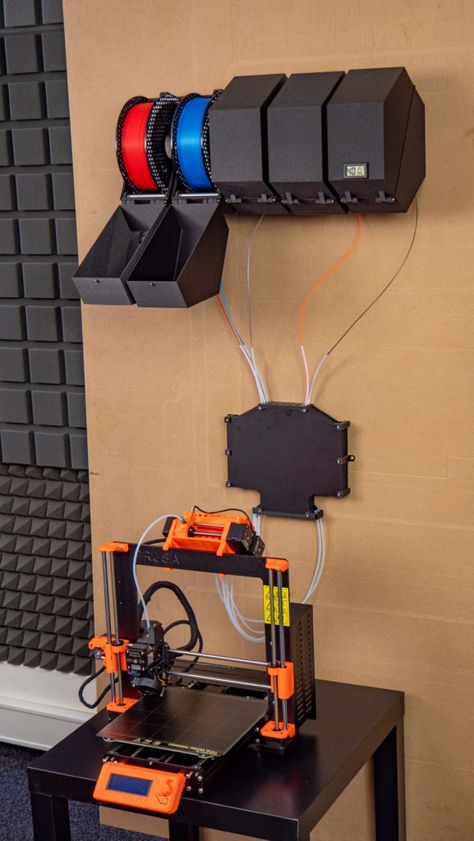 So if you're looking for durable and reliable parts, this printer should be on your list. Just remember that a spool of filament can be quite expensive. nine0003
So if you're looking for durable and reliable parts, this printer should be on your list. Just remember that a spool of filament can be quite expensive. nine0003
Creality Ender 3
Best Budget FDM 3D Printer
Price: $223.
Print volume: 220x220x250 mm.
Layer thickness: 100 µm.
Pros:
- high quality components,
- ease of use.
Cons:
- open chassis,
- The typing sound can be quite loud.
Ender's range of 3D printers is known for its superior performance at an affordable price. And Ender 3 is a perfect example of this. At this price, you would think that Black Friday lasts all year round. Creality has somehow managed to inject some of the highest quality components into Ender 3. The printer comes in kit form, which may not be to everyone's liking, but the assembly process actually gives you a good idea of how the printer works and can help with troubleshooting if there are any in the future. nine0003
nine0003
Formlabs Form 3
Best SLA Printer
Price: $3499.
Print volume: 145x145x185 mm.
Layer thickness: 15 µm.
Pros:
- easy replacement of material cartridges,
- No layer visibility.
Cons:
- expensive,
- additional costs for obtaining a medical version.
Formlabs Form 3 and its predecessor Form 2 set the benchmark for SLA printers (3D printing technology based on the layer-by-layer curing of a liquid material under the action of a laser beam). And the FormLabs Form 3 is by far the best printer on the market. This is a rather expensive product, but the quality of the results speaks for itself. Products are obtained with invisible layers, and the printer itself is equipped with a system that allows you to remove the finished product without the use of cutters. In addition to the impeccable print quality, the big advantage here is the ease of use.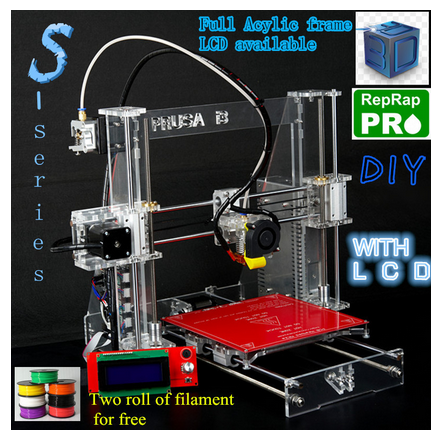 Changing media is as easy as replacing a cartridge on a conventional printer. For a little more, you will have access to biomaterials for use in dentistry and medicine. Oh, and the PreForm software is simple and intuitive too. nine0003
Changing media is as easy as replacing a cartridge on a conventional printer. For a little more, you will have access to biomaterials for use in dentistry and medicine. Oh, and the PreForm software is simple and intuitive too. nine0003
3Doodler
Best Portable 3D Printer
Price: $49.99.
Pros:
- you can take it anywhere,
- no print volume limit.
Cons:
- expensive consumables,
- print quality is up to you.
One of the biggest limitations for 3D printing is the fixed volume. But since 3Doodler is a 3D printing pen, here you can print projects of any size. The cost of consumables can be quite high, especially if you are trying to model a car in 1:1 scale. What's more, it's fantastic fun to pick up a pen from a table top and draw lines in the air with plastic ink. The threads come in different colors, so you can consider it an added plus. But the downside is that you will have to rely only on yourself for printing accuracy, since the extruder is entirely in your hands, and not on rails.